There’s an undeniable appeal to cats boasting broad, round faces, expressive, wide eyes, and those uniquely endearing, slightly squished noses. These flat-faced felines aren’t just about captivating looks; they possess equally charming personalities that make them wonderful companions.
However, the very physical traits that contribute to the popularity of flat-faced cat breeds can also predispose them to specific health concerns. Thorough research into the needs of a particular breed before welcoming a kitten into your home is crucial. This preparation ensures you find the purrfect match and are well-equipped to provide the best possible care for your flat-faced friend.
Exploring Flat-Faced Cat Breeds
1. Persian
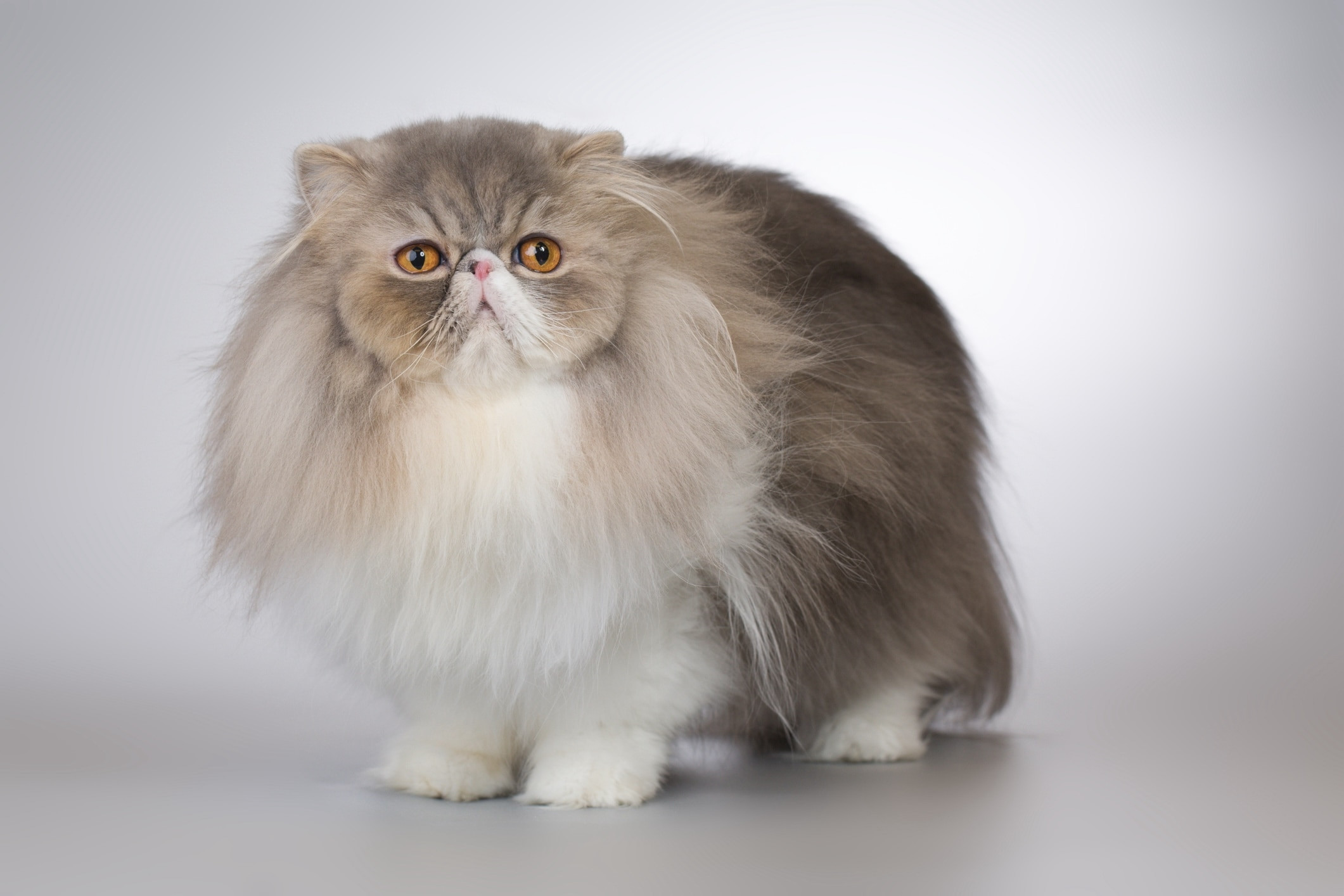 A fluffy grey and white Persian cat lounges against a plain grey backdrop.
A fluffy grey and white Persian cat lounges against a plain grey backdrop.
Photo credit: Couperfield/iStock / Getty Images Plus via Getty Images
The Persian cat, with its luxurious long hair and distinctively flat face, consistently ranks among the most beloved cat breeds. Beyond their striking appearance, it’s their gentle temperament and tranquil nature that truly endear them to cat lovers, according to Stephen Quandt, a certified feline training and behavior specialist (CFTBS) at Cat Behavior Help.
Persians are the epitome of laid-back companions. Their ideal day involves relaxing on laps and basking in sunbeams, rather than scaling elaborate cat trees or engaging in vigorous play. “They play gently, almost as if it’s an afterthought,” Quandt observes. “A couple of feather wands might be all the playful stimulation they desire.”
Daily grooming is non-negotiable for Persians to prevent matting of their magnificent coats. However, this breed often genuinely enjoys grooming sessions, frequently rewarding their humans with soft meows and gentle purrs as tokens of their appreciation for the attention.
2. British Shorthair
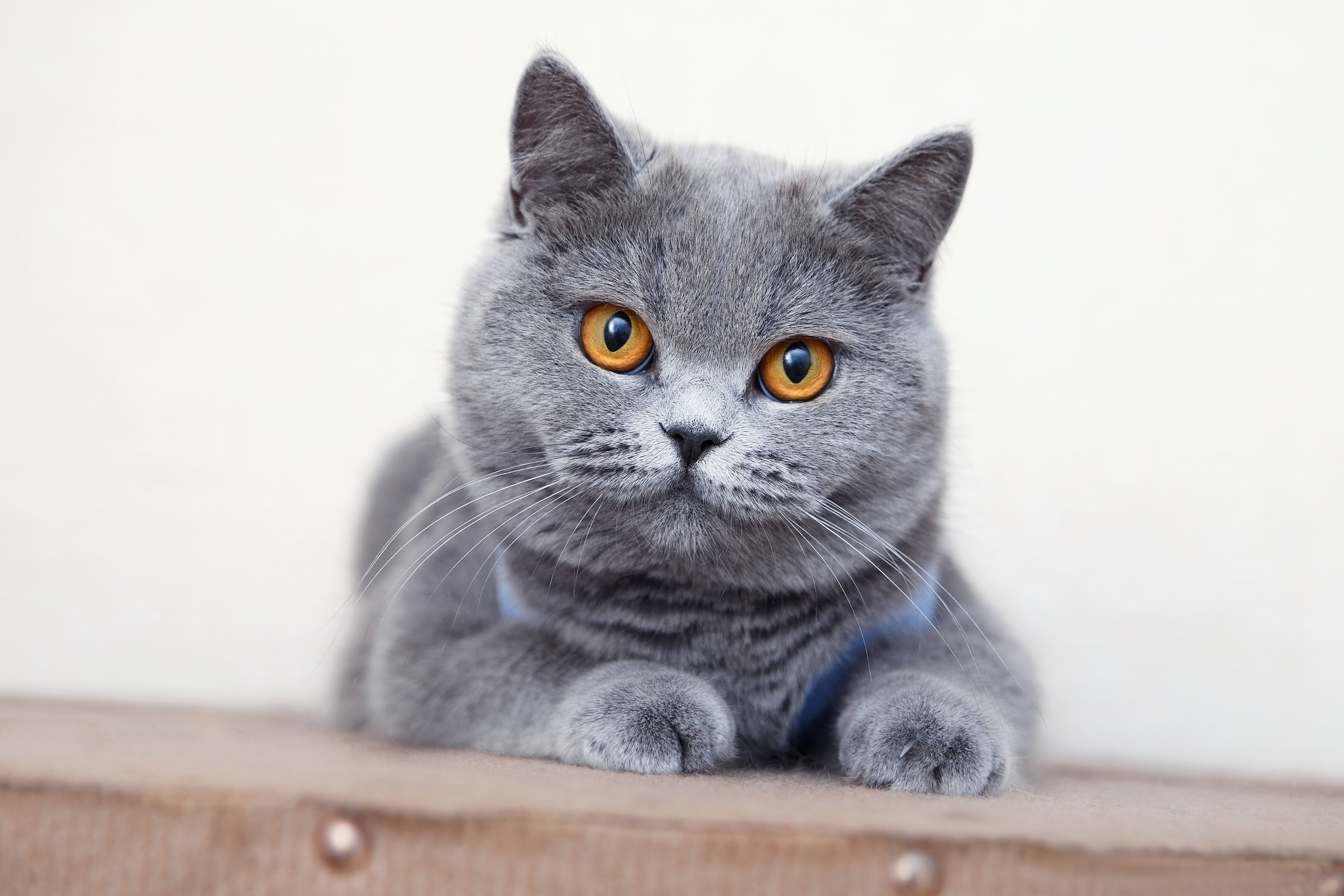 A close-up of a British Blue British Shorthair cat, highlighting its round face and plush fur.
A close-up of a British Blue British Shorthair cat, highlighting its round face and plush fur.
Photo credit: Adobe Stock/Yana Mirta
British Shorthair cats possess a slightly more pronounced muzzle compared to some of their flatter-faced counterparts, like the Persian. Yet, their undeniably round face, coupled with their dense, plush fur, gives them an irresistible teddy bear-like charm.
These sturdy companions prefer to stay grounded and aren’t particularly keen on being picked up. While affectionate in their own way, British Shorthairs also possess an independent streak and appreciate their alone time. This balance makes them exceptionally well-suited for busy pet parents who desire a loving, yet not overly demanding, feline companion.
3. British Longhair
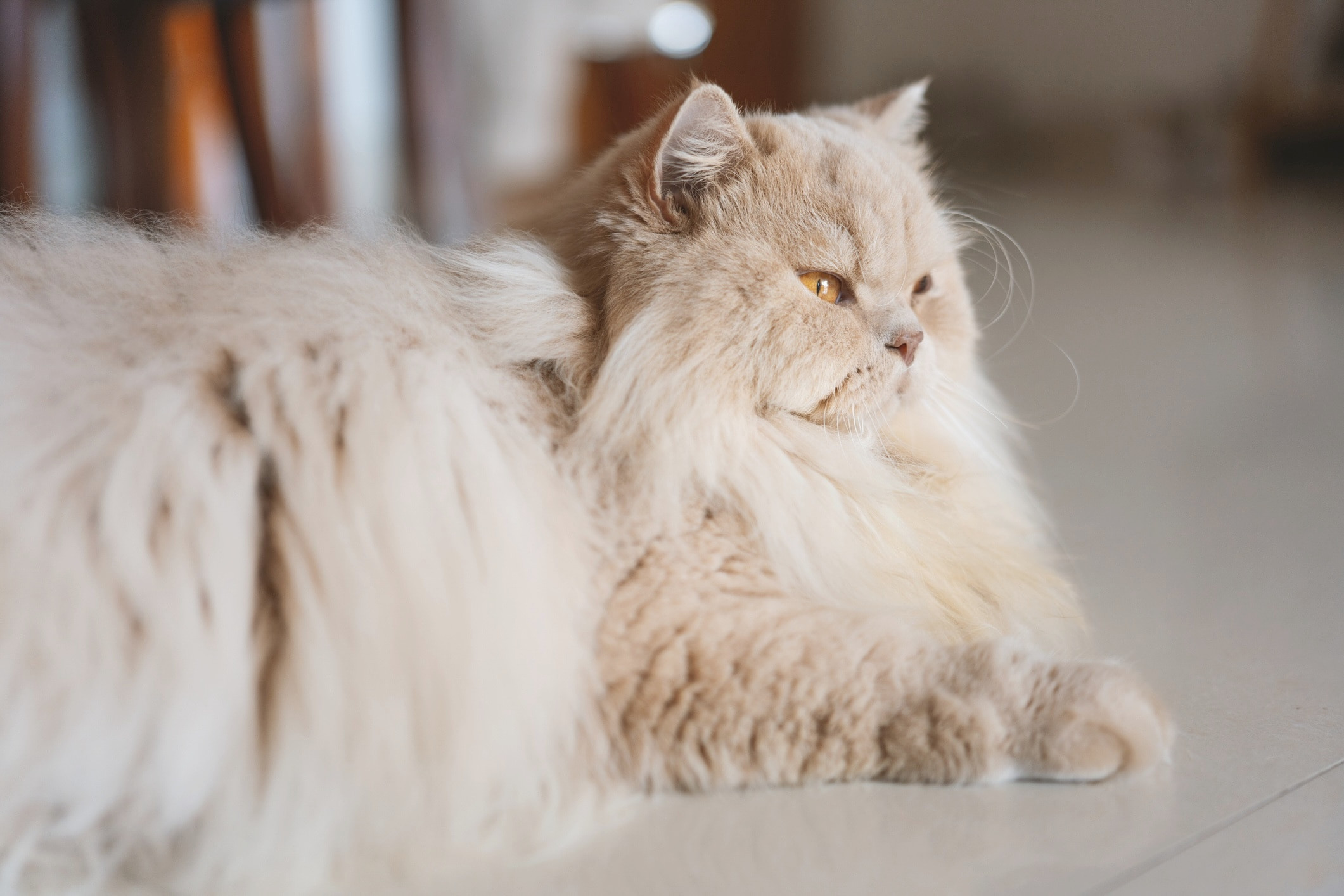 A cream-colored British Longhair cat with long, flowing fur, lying down in a relaxed pose.
A cream-colored British Longhair cat with long, flowing fur, lying down in a relaxed pose.
Photo credit: chuangxin zhou/iStock / Getty Images Plus via Getty Images
A delightful blend of the British Shorthair and Persian, the British Longhair inherits its luxurious, thick coat from the Persian lineage and the charmingly rounded face from the British Shorthair side. They also benefit from the wonderful temperament of both parent breeds.
British Longhair cats are known for their intelligence and are remarkably food-motivated. This combination makes them highly trainable, opening up exciting possibilities for fun training sessions. Their eagerness to learn tricks serves as an excellent bonding activity and provides essential mental stimulation for these clever felines.
4. Exotic Shorthair
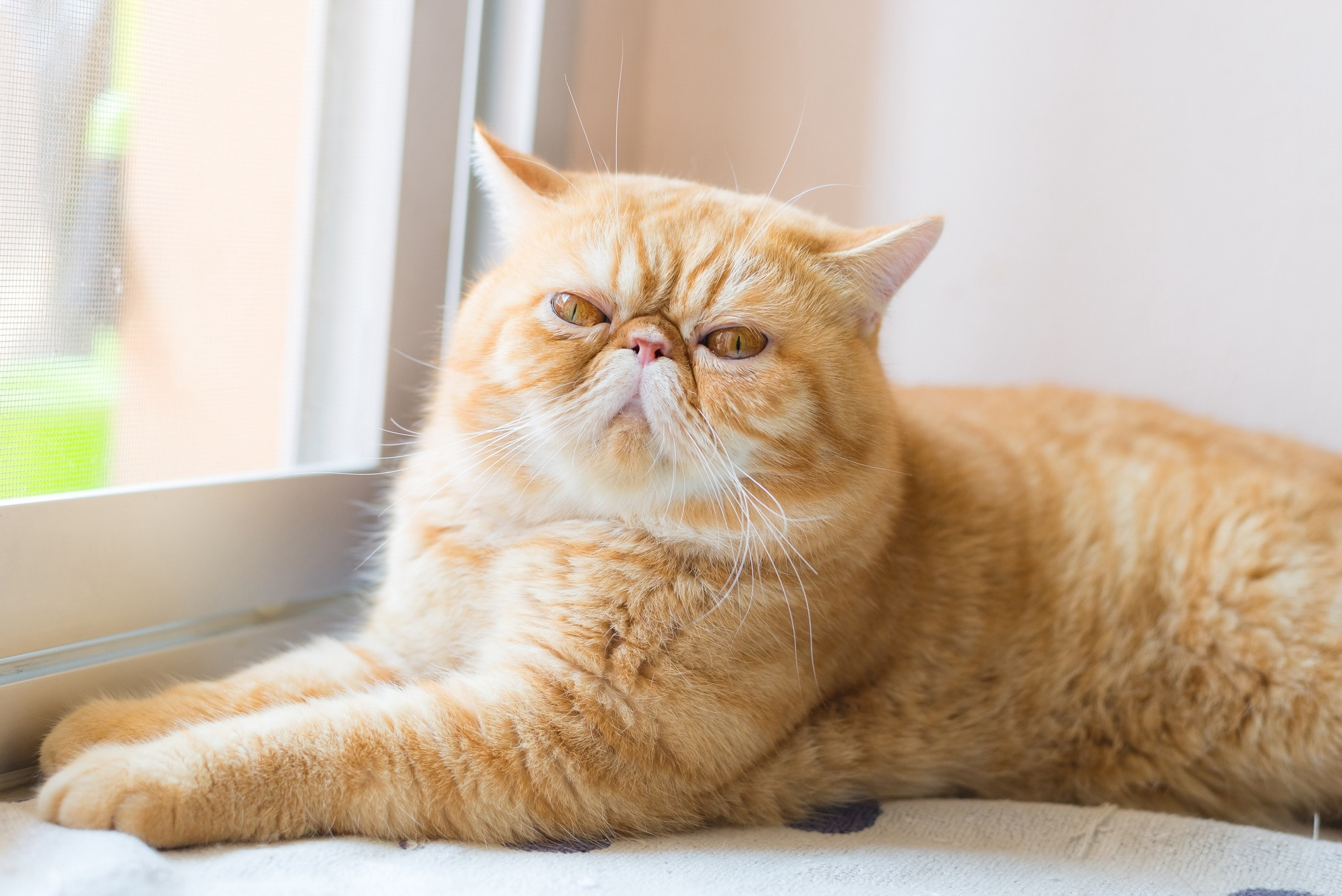 An orange tabby Exotic Shorthair cat lounges by a windowsill, showcasing its short coat and flat face.
An orange tabby Exotic Shorthair cat lounges by a windowsill, showcasing its short coat and flat face.
Photo credit: Wutlufaipy/iStock / Getty Images Plus via Getty Images
For those captivated by the Persian’s aesthetic but less enthusiastic about the demanding grooming regime, the Exotic Shorthair presents an ideal alternative. Affectionately nicknamed the “lazy man’s Persian,” their grooming needs are considerably less intensive, requiring only a weekly brushing, with potentially more frequent sessions during shedding season.
Similar to their Persian relatives, Exotic Shorthairs are not known for their agility in scaling cat trees or seeking out high vantage points. However, they tend to be more energetic and playful than Persians. This livelier nature makes them excellent companions for active households, including families with children and other pets, provided proper introductions are carefully managed.
5. Himalayan
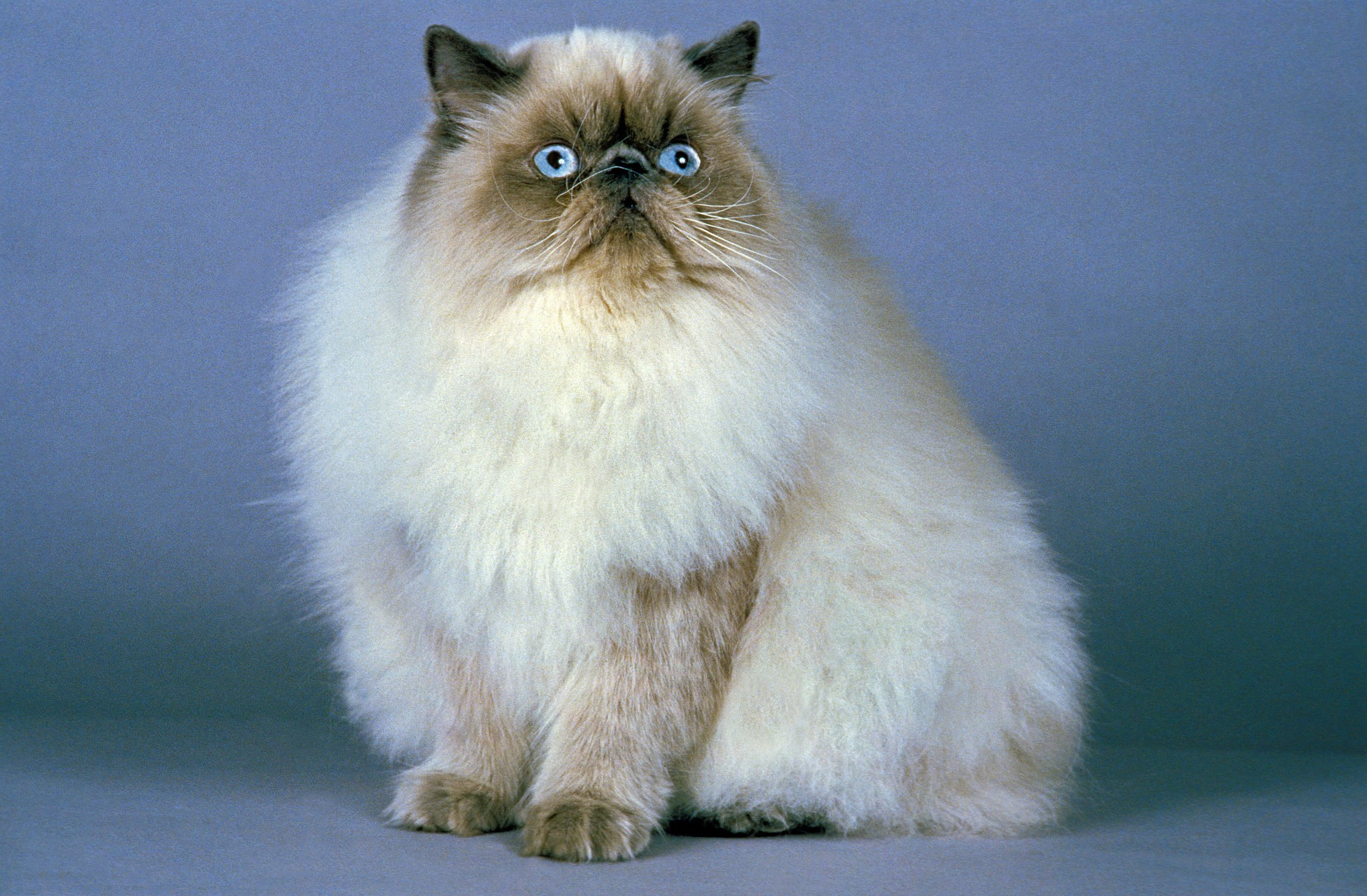 A Himalayan cat with striking blue eyes and colorpoint markings sits against a soft blue background.
A Himalayan cat with striking blue eyes and colorpoint markings sits against a soft blue background.
Photo credit: slowmotiongli/iStock / Getty Images Plus via Getty Images
As a captivating mix of the Persian and Siamese breeds, Himalayan cats share many characteristics with the Persian. They inherit their lush, fluffy coat from their Persian ancestry, while their distinctive color point markings—darker coloration on the ears, nose, paws, and tail—come from the Siamese influence. Despite their voluminous fur, Himalayans are medium-sized cats, typically weighing between 7 and 12 pounds.
Himalayans are known for their adaptable and friendly nature, readily offering affection to anyone who treats them kindly. This makes them wonderful additions to diverse family settings, as long as their daily grooming requirements are consistently met.
6. Scottish Fold
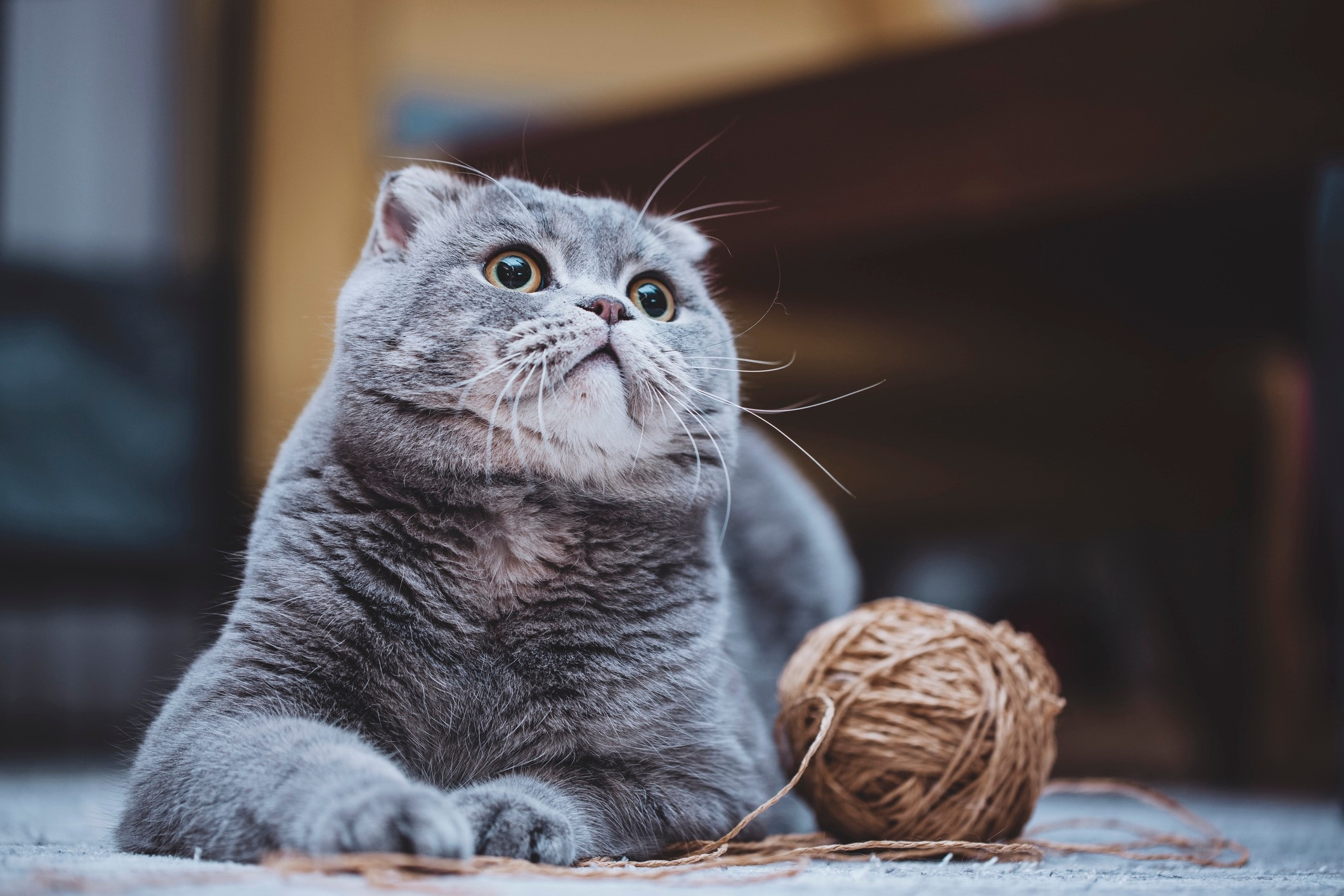 A grey Scottish Fold cat lies next to a ball of yarn, highlighting its folded ears and round face.
A grey Scottish Fold cat lies next to a ball of yarn, highlighting its folded ears and round face.
Photo credit: Xesai/E+ via Getty Images
Scottish Folds have achieved widespread popularity, largely due to their endearingly rounded facial features, distinctive folded ears, and even celebrity endorsements—they are famously known as Taylor Swift’s feline companions. However, ethical concerns cast a shadow over the charm of this flat-faced breed.
While described as “sweet and friendly” by experts like Quandt, their signature folded ears are a result of a genetic mutation that causes osteochondrodysplasia (OCD), a painful joint condition, as detailed in research published in BMC Veterinary Research [https://link.springer.com/article/10.1186/s12917-023-03811-0].
For those considering welcoming a Scottish Fold into their home, a deep understanding of feline body language is essential. Subtle signs of discomfort, such as changes in eating habits, altered bathroom routines, increased vocalization, a lack of interest in usual activities, or even uncharacteristic aggression, should never be ignored. Promptly consult with your veterinarian if you observe any changes in your Scottish Fold’s behavior, as these could indicate underlying pain or discomfort.
7. Selkirk Rex
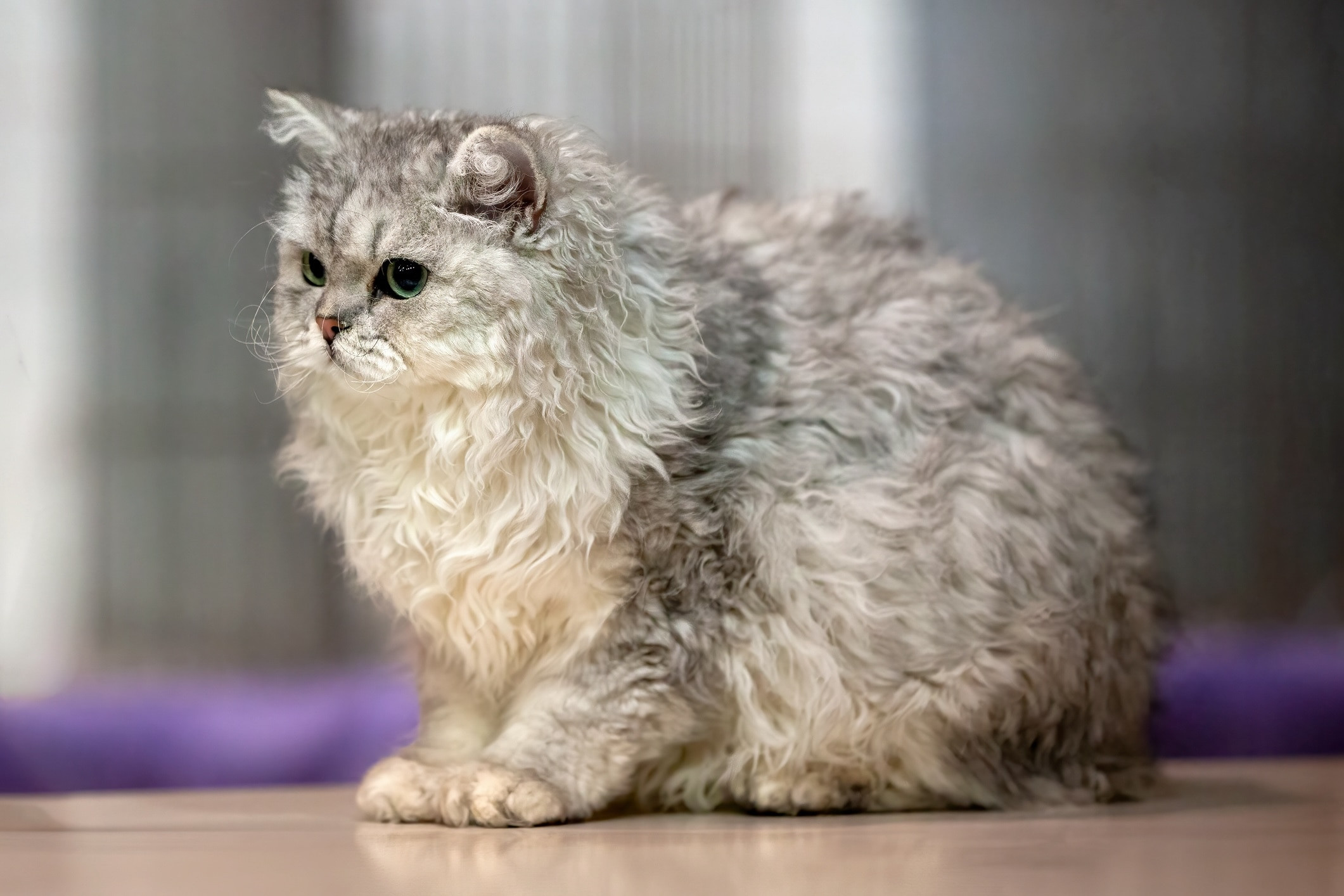 A Selkirk Rex cat with a curly coat, loafing comfortably on the floor.
A Selkirk Rex cat with a curly coat, loafing comfortably on the floor.
Photo credit: Sue Thatcher/iStock / Getty Images Plus via Getty Images
The Selkirk Rex is distinguished by a unique gene that gives them a magnificent mane of curly hair. This coat, ranging from tight ringlets to loose waves, is dense thanks to outcrossing with Persians and British Shorthairs. While they do shed, weekly grooming is usually sufficient, but excessive brushing should be avoided as it can lead to frizz or breakage of their delicate curls.
In terms of personality, Selkirk Rex cats are generally known to be sweet-natured and people-loving. However, early socialization, exposing them to a variety of people, sights, and sounds, is crucial to ensure they develop into well-adjusted and confident flat-faced feline companions.
Health Considerations Specific to Flat-Faced Cats
While all cats can experience health issues throughout their lives, flat-faced cats, also known as brachycephalic breeds, are predisposed to a higher risk of certain health challenges due to their unique anatomy. The structure of their skulls results in shorter bones, leading to a rounded head, a shortened nose, and often an underbite where the lower jaw protrudes further than the upper jaw.
Brachycephalic Obstructive Airway Syndrome (BOAS)
Brachycephalic Obstructive Airway Syndrome (BOAS) is a term encompassing a range of breathing difficulties directly linked to the brachycephalic anatomy seen in cats and dogs.
In Cats With Flat Faces, their distinctive anatomy can lead to breathing challenges due to several factors:
- Elongated soft palate: The roof of the mouth may be excessively long, obstructing airflow.
- Hypoplastic trachea: Their windpipe may be narrower than normal, restricting airflow.
- Everted laryngeal saccules: Small sacs within the larynx may turn outwards, causing airway obstruction.
- Stenotic nares: Their nostrils may be abnormally narrow, limiting air intake.
While the snoring and snorting sounds often associated with flat-faced cats might be perceived as cute, BOAS can manifest in various other symptoms, depending on the severity of the airway obstruction. Common symptoms include open-mouthed breathing, noisy respiration, intolerance to exercise and heat, coughing, gagging, reverse sneezing, and visibly increased effort when breathing.
These symptoms can be exacerbated when a cat is overweight, exposed to hot and humid conditions, or experiences stress. Owners of flat-faced cats must be vigilant in monitoring for any signs of respiratory distress.
Open-mouth breathing in cats is always a serious sign and warrants immediate veterinary attention. In severe BOAS cases, surgical intervention may be recommended to alleviate airway obstructions and improve breathing.
Eye Issues
The shallow eye sockets characteristic of flat-faced cats cause their eyes to protrude somewhat. This conformation means their eyelids may not fully close, leaving their eyes more vulnerable. Consequently, they are prone to inflammation and corneal ulcers (scratches on the eye’s surface). They may also experience chronic watery eyes, often accompanied by tear staining. The unique facial structure of these breeds can also lead to malformed tear ducts, further contributing to tear drainage issues.
Consult your veterinarian for advice on suitable products to help maintain your flat-faced cat’s eye hygiene and health.
Seek veterinary care if you observe any of the following signs in your cat: squinting, increased eye discharge (especially if it is yellow or green), rubbing or pawing at the eye, or red or cloudy appearance of the eyes.
Dental Disease
Dental disease is remarkably prevalent in cats, affecting an estimated 50–90% of cats over 4 years of age, according to the Cornell University Feline Health Center [https://www.vet.cornell.edu/departments-centers-and-institutes/cornell-feline-health-center/health-information/feline-health-topics/feline-dental-disease].
Cats with flat faces may face an even greater risk of dental problems. Their anatomy often results in overcrowded and misaligned teeth, which can promote increased plaque and tartar accumulation, as highlighted in studies published in the Journal of Veterinary Dentistry [https://pubmed.ncbi.nlm.nih.gov/29911947/].
Daily tooth brushing and regular veterinary dental checkups and cleanings are the most effective strategies for preventing dental issues in flat-faced cats. Your veterinarian can provide guidance on proper tooth brushing techniques and recommend appropriate dental care products for your feline companion.
WRITTEN BY
Janelle Leeson
Freelance Writer

